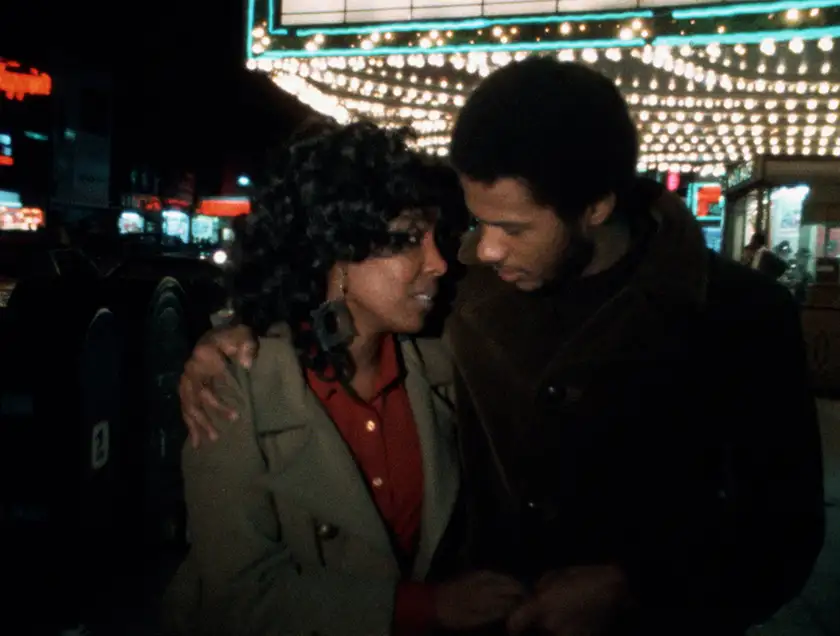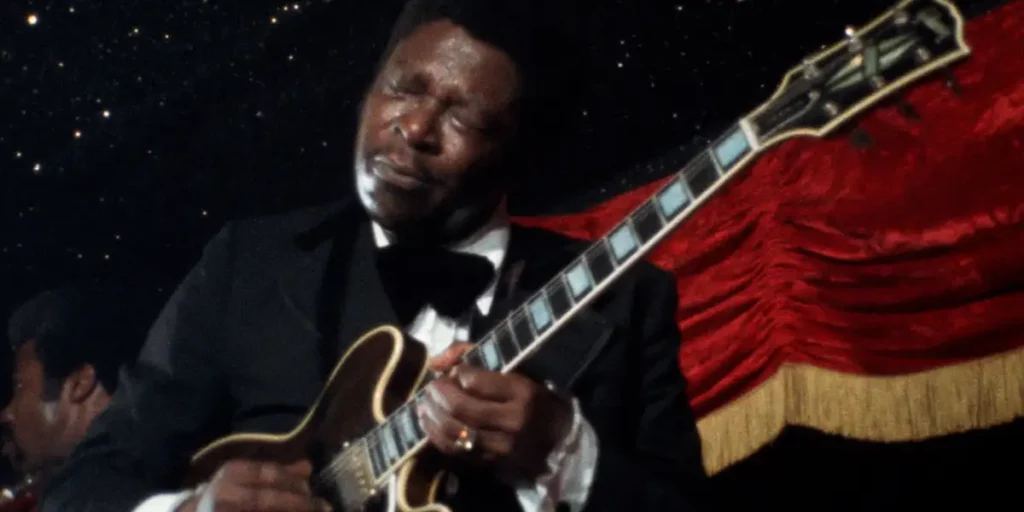The Blues Under the Skin has a new chance to impact audiences with its unique structure and powerful messages on music, culture, and truth.
Director: Roviros Manthoulis
Genre: Documentary, Music
Run Time: 88′
Original Release: August 30, 1973
2K Restoration Release: July 12, 2024 in select UK theaters
Lovers of music, and the blues in particular, may be familiar with the story of Robert Johnson. Legend has it, Johnson, a musician struggling to break through, met the devil at a crossroads in Mississippi, sold his soul to said devil, and in turn became one of the uniquely talented musicians ever. This mix of myth and reality became the foundation on which blues music was born.
It feels fitting, then, that The Blues Under the Skin, a 1973 film from Roviros Manthoulis, utilizes both a fictional narrative and a documentary style to tell the story of the blues. A new 2K restoration of the film is coming to theaters thanks to the work of Kino Lorber, and what audiences will find is something messy, complicated, and real, a perfect encapsulation of the genre it places under the microscope.
The Blues’ narrative follows the struggles of a young couple (Onike Lee and Roland Sanchez) in Harlem. The two navigate the struggles of poverty and bigotry, adding a culturally relevant and political underpinning to the film’s exploration of music. Also sprinkled throughout the film are real interviews and performances from several influential blues musicians. B.B. King, Buddy Guy, Sonny Terry & Brownie McGhee, Mance Lipscomb, Bukka White, and Roosevelt Sykes all grace the screen, intercut with the couple’s dramatic narrative. This weaving of cinematic genres points to Manthoulis’s understanding of the music he’s exploring: It goes much deeper than some catchy guitar riffs and gifted singers. The film creates a deep ethos about what blues music is, marked by struggle, emotion, and a longing for something better.
Many will soon be seeing The Blues Under the Skin for the first time and will walk away having caught a small glimpse into lives and circumstances they may not have known much about, making the film a deeply effective portrayal of empathy. Blues does this by not only being a good documentary (capturing lives and people) but also by being a good film, in general, painting an incredibly distinct cinematic picture.
Lovely shots of rural America are contrasted with racing images of rusty bridges and broken infrastructure. The film’s mood often feels gloomy, as characters interact in dark pool halls, outcast by society, while the blues music plays on in the background, ready to burst through to the light. The film’s use of mood, cinematography, and lighting recreate in a way the feeling of these artists, struggling to make sense of their situations and making music that reflects that desire for beauty.

With the mixing of fiction and documentary, along with the film’s overall mood, The Blues Under the Skin says something deeply profound about the way people experience truth itself. While a large portion of the film could be categorized as “fiction,” it would be silly to deny that what these portions say about race, music, poverty, and politics are not expressions of truth. The stories in our music are not always factually true (one musician says this explicitly in the film, stating that the “women, whiskey, and money” often sung about in blues music are often stand-in symbols for something else), but they touch on emotions in a way that is metaphysically true, which may be an even deeper type of truth.
“Blues is truth,” an artist expresses towards the film’s closing. With its examination of Black life from Harlem to the Bourbon Street, its tracing of the blues, and its handling of socioeconomic and political undertones, The Blues Under the Skin makes abundantly clear how music conveys truth in a way the history books can’t. It blends fiction and documentary styles to match the energy of its subject matter: a genre of music that blurs reality and myth, becoming one of the most influential genres in the process. This experimental effort will hopefully receive a new life in its coming theatrical run, giving new audiences an authentic look into the origins and evolution of blues music that has shaped American history.
A new 2K restoration of The Blues Under the Skin will be released on July 12, 2024 at Maysles Documentary Center in New York and on July 16 at the American Cinematheque in L.A., with a national expansion to follow. The non-restored version of the film is now available globally on DVD. Read our reviews of Blue Giant, Chicago, and Ronnie’s!

